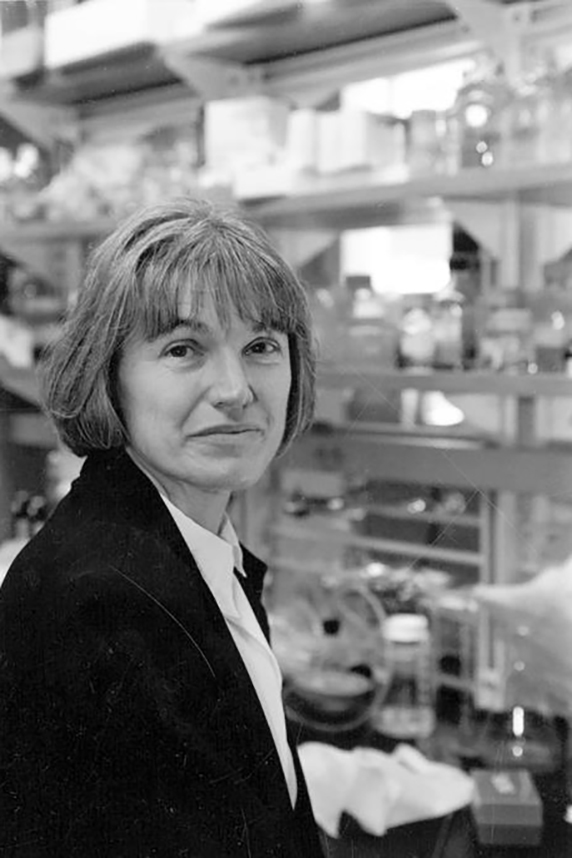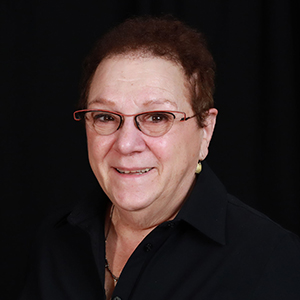During an NIEHS lecture Oct. 6, Elana Elkin, Ph.D., assistant professor of environmental health at San Diego State University, described how a chemical called trichloroethylene (TCE) can interfere with fetal development in the womb.
 Elkin is an assistant professor of environmental health at San Diego State University, where she works with the long-term goal of understanding the role that environmental chemicals play in adverse birth outcomes. (Photo courtesy of Elana Elkin)
Elkin is an assistant professor of environmental health at San Diego State University, where she works with the long-term goal of understanding the role that environmental chemicals play in adverse birth outcomes. (Photo courtesy of Elana Elkin)TCE was used widely in the past in refrigerant manufacturing and metal degreasing. Despite governmental efforts to clean up TCE and prevent further contamination, legacy soil and water pollution remains.
“TCE is a widespread environmental pollutant detected in more than half of Superfund sites,” explained Elkin, a former NIEHS Superfund Research Program (SRP) trainee and recipient of the 2019 Karen Wetterhahn Award. “Pregnant women may be exposed to TCE by drinking contaminated water.”
After consuming TCE, the chemical can enter the bloodstream and cross into the placenta, a critical organ during pregnancy that provides oxygen and nutrients to the developing fetus and breaks down toxic substances that it encounters. According to Elkin, these factors also make the placenta more likely to be a target of toxicity.
“Through my research, I wanted to understand how exposure to TCE can harm the placenta on a molecular level,” Elkin said.
Sex-specific differences
Previous studies have shown associations between exposure to TCE and low birth weight, among other adverse birth outcomes. Elkin’s research seeks to uncover the underlying mechanism.
“In most cases, we don’t know what causes adverse birth outcomes, beyond factors such as genetics, infections, or behaviors like smoking and drinking alcohol,” Elkin said. “My job as an environmental toxicologist is to study the role that contaminants play in producing these devastating effects that can have both short-term and long-term health consequences for mothers and babies.”
Elkin explained her lab group’s study of rats linking prenatal TCE exposure to 10% lower birth weight of offspring. They discovered the effect was more pronounced in male offspring than in female offspring.
Because males and females differ on a molecular level in their DNA and hormone composition, Elkin looked at how TCE impacted gene expression in the placenta. Gene expression is the process by which information encoded in DNA is used to make proteins.
She found greater differences in gene expression in the placentas of female offspring than male offspring following TCE exposure, compared to unexposed offspring. Specifically, she discovered increased expression of genes responsible for stress response, and decreased expression of genes involved in the assembly and transport of mitochondria, the part of the cell that produces energy.
“While females showed more differences in gene expression than males, males were more susceptible to decreased birth weight,” Elkin said. “These differences may be because the genes expressed by females were largely an adaptive response to defend against exposure to toxic substances.”
 Karen Wetterhahn, namesake of the Wetterhahn Memorial Award, promoted interdisciplinary science, mentorship, and community education throughout her career. Elkin presented the Wetterhahn Memorial Lecture in her honor. (Photo courtesy of Dartmouth College Library)
Karen Wetterhahn, namesake of the Wetterhahn Memorial Award, promoted interdisciplinary science, mentorship, and community education throughout her career. Elkin presented the Wetterhahn Memorial Lecture in her honor. (Photo courtesy of Dartmouth College Library)Toxicity in human placental cells
Elkin shared that in the human body, TCE can be metabolized to form S-(1,2-dichlorovinyl)-L-cysteine, or DCVC, a highly reactive compound with the potential to damage cells.
She suspected that DCVC may be responsible for the effects in the placenta that lead to low birthweight, so she conducted additional experiments using human placental cells. She again looked at gene expression and analyzed the cells’ oxygen consumption rates, which measure the ability of mitochondria to produce energy.
“At shorter exposure durations, the cells initially increased their oxygen consumption rate as a result of stress,” Elkin said. “However, after longer exposures, oxygen consumption decreased as the cells lost the ability to adapt to stressors, making them more vulnerable to cell death.”
According to Elkin, results from both the rat study and cell study indicate that TCE may induce mitochondrial dysfunction and elevated stress response in the placenta, which may contribute to an increased risk of adverse birth outcomes.
Toxicants and pathogens
Elkin plans to further investigate how exposure to pollutants disrupts placental processes during pregnancy.
“I hope to also research how toxicants and pathogens interact during pregnancy,” Elkin said. “During this era of COVID-19, it is increasingly important to understand how exposure mixtures affect the health of mothers and babies.”
As Elkin’s career evolves, she continues to demonstrate Wetterhahn’s dedication to science and mentorship.
“The Wetterhahn Award is a recognition for outstanding SRP investigators,” said SRP Director William Suk, Ph.D. “Elana is more than just a good researcher — she gives back to the community, understands multidisciplinary research, and serves as a mentor to other students.”
Citations:
Su AL, Harris SM, Elkin ER, Karnovsky A, Colacino JA, Loch-Caruso R. 2022. Trichloroethylene modifies energy metabolites in the amniotic fluid of Wistar rats. Reprod Toxicol 109:80-92.
Elkin ER, Bakulski KM, Colacino JA, Bridges D, Kilburn BA, Armant DR, Loch-Caruso R. 2021. Transcriptional profiling of the response to the trichloroethylene metabolite S-(1,2-dichlorovinyl)-L-cysteine revealed activation of the eIF2α/ATF4 integrated stress response in two in vitro placental models. Arch Toxicol 95(5):1595-1619.
Elkin ER, Su AL, Kilburn BA, Bakulski KM, Armant DR, Loch-Caruso R. 2022. Toxicity assessments of selected trichloroethylene and perchloroethylene metabolites in three in vitro human placental models. Reprod Toxicol 109:109-120.
(Lauren Sprouse is a science communication specialist for MDB, Inc., a contractor for the NIEHS Superfund Research Program.)









